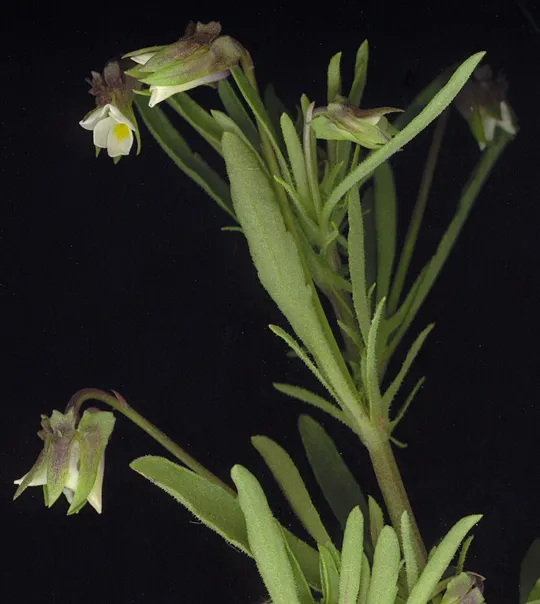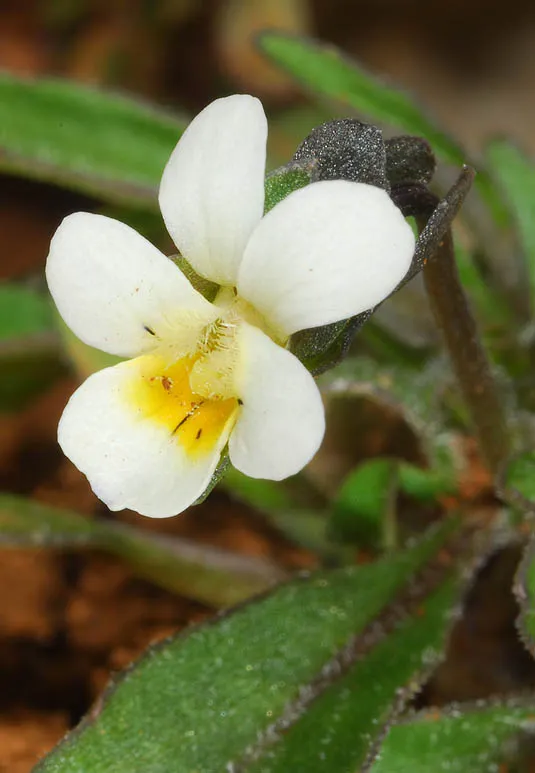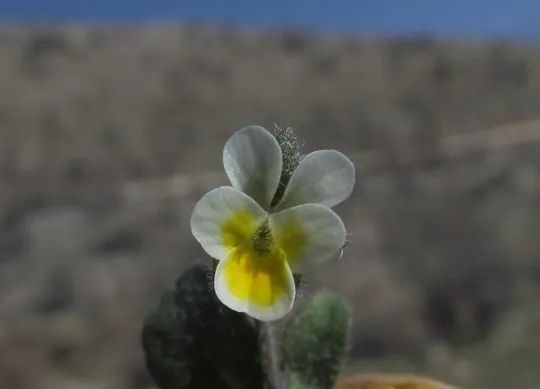Viola pentadactyla
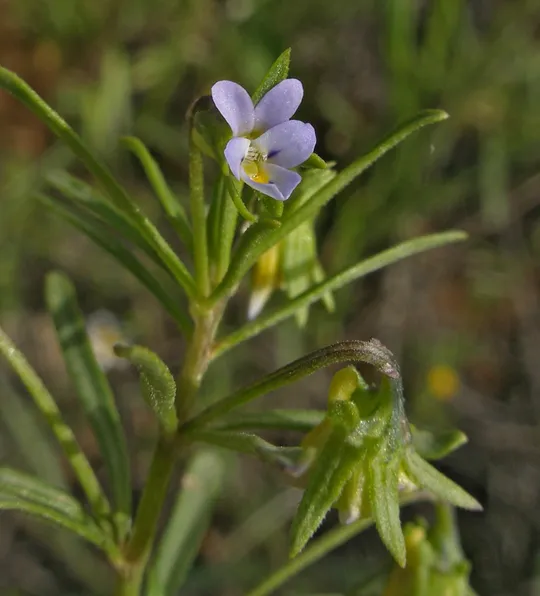
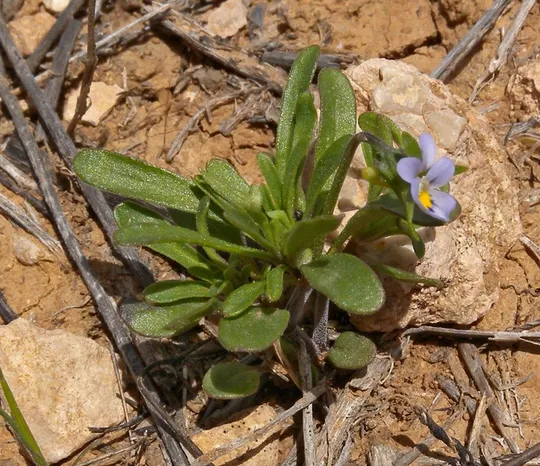
Viola pentadactyla grows in the
Judean Mountains where it was found in 2003 by Oz Golan on a single site in a
field near Mitspe Ya'ir in the southern section of the region. The plant had
been previously collected by Danny Zohary in 1941 from two sites in Jerusalem: the
Valley of the Cross and south of Neve Sha’anan (now within the boundary of the Givat
Ram Botanical Garden). Tuvia Kushnir also collected V. pentadactyla
in 1942 in "the Jerusalem area" (this was the "Jerusalem sub-species"
prototype). Despite search efforts in the area, which remained open, it was not
found again. It may have been overlooked due to its small size and according to
estimates there are presumably two sites in Israel.
Margins of traditionally cultivated fields located in montane
valleys on the Ma'on Ridge near Mitspe Ya'ir at altitudes of 850-900 meters, on
dark brown grumosol soil.
The genus Viola includes 400 species found mainly
in northern temperate regions, but its distribution reaches the Andes Mountains
in South America. The genus is characterized by flowers borne
on long, thin pedicels, bent at the end emphasizing the flowers that are perpendicular
to the ground.
V.pentadactyla
differs from the other annual Viola species
in the Middle East mostly in its narrow and entire leaves. Unlike
V. modesta and its close species V. occulta,
this is a distinct species, and no transition forms between it and other
species were found. The identifying character that separates it from other Viola species
is the shape of the stipule that is divided into two lanceolate lobes that are split
to the base; one of the lobes is equal in length to the leaf itself and looks
like a normal leaf. The formal character noted in the literature that distinguishes
this species from other annual Viola species in our region is the two
tiny bracts on the pedicel. However this character is variable and also appears
in V. Modesta (Meikle, 1980) and in V. occulta in the Ma'on Ridge. In the Flora Palaestina (1972), Zohary described the
Jerusalem population as a unique endemic sub-species: V. pentadactyla ssp.
hierosolymitana which has a typical corolla shorter or equal in length to
the calyx (no more than twice its length) colored white to yellowish (as
opposed to blue) and a spur slightly longer than the calyx appendages. The Ma'on Ridge population has properties similar to the
Jerusalem “sub-species” in that the flower is as long as the calyx and the spur is only slightly noticeable, but
on the other hand the flowers are purple-bluish and yellowish-white. Since this
description, there is no systematic reference to this taxon in other Floras or
in other taxonomic research and the prototype population is extinct in Jerusalem.
Only a detailed taxonomic study will clarify the systematics of the taxon in Israel
and its degree of endemism.
·
Viola pentadactyla is extinct at the sites
in Jerusalem, where it once grew; on the other hand, a population was located at
a new site in the southern Judean Mountains.
·
The plant’s high affinity to
traditionally cultivated fields increases the risk of its extinction: the habitat
is sensitive to change and threatened particularly by the potential transition to
modern agriculture.
·
V. pentadactyla is not protected
in nature reserves.
Efforts should be
made to find Viola
pentadactyla and
study its taxonomy, since this species was described to science as special
sub-species in the Jerusalem area, which has meanwhile become extinct. The distribution
and taxonomy of V.
pentadactyla should be studied, particularly on the Ma'on Ridge, as
should its ecological relationship with V. modesta and V. occulta. A population should be re-established in the Jerusalem
area and backup populations should be created in botanical gardens. The area of
the valley descending from Mitspe Ya'ir towards Susiya should be declared a
nature reserve.
Viola pentadactyla has a restricted distribution
and includes the Syrian Desert transition zone, the Anti-Lebanon Mountains (not
found on Mount Hermon), the Judean Mountains in Israel, and in Gilead, Ammon
and Moab in Jordan. Danin (2004) notes it as a common species from Ammon in Jordan.
V. pentadactyla was collected once from the
Gaziantep area in Turkey, near the Syrian border, north of Aleppo, where it grew
at the edge of vineyards on a marl substrate at an altitude of 400 meters. The species
was first described in the 19th-century from the Aleppo area, in northern
Syria. V. pentadactyla does not appear in the Floras
of Egypt, Lebanon, Iraq and Iran, which supports its definition as being endemic
to the Levant.
Viola
pentadactyla is
a rare annual species endemic to the Levant. It is seriously endangered, as it
is an annual plant growing in small, close populations, at only one site, in a
habitat that is under constant threat of change from traditional to intensive
agriculture.
Current Occupancy Map
| 1000 squre meter pixel | 5000 squre meter pixel | 10000 squre meter pixel | |
|---|---|---|---|
| number of observations | 0 | 0 | 0 |
| in total pixels | 0 | 0 | 0 |
| Family | Violaceae |
| Classification | On the endangered species list |
| Ecosystem | Semi-Steppe Belt |
| Chorotype | Eastern Mediterranean |
| Conservation Site | Ma'on Ridge |
| Rarity |
1
6
6
|
|---|---|
| Vulnerability |
0
1
4
|
| Attractiveness |
0
0
4
|
| Endemism |
0
1
4
|
| Red number |
1
4.2
10
|
| Peripherality | N |
| IUCN category | DD EW EX LC CR EN VU NT |
| Threat Definition according to the red book | Endangered |
 Based on:
Based on:
